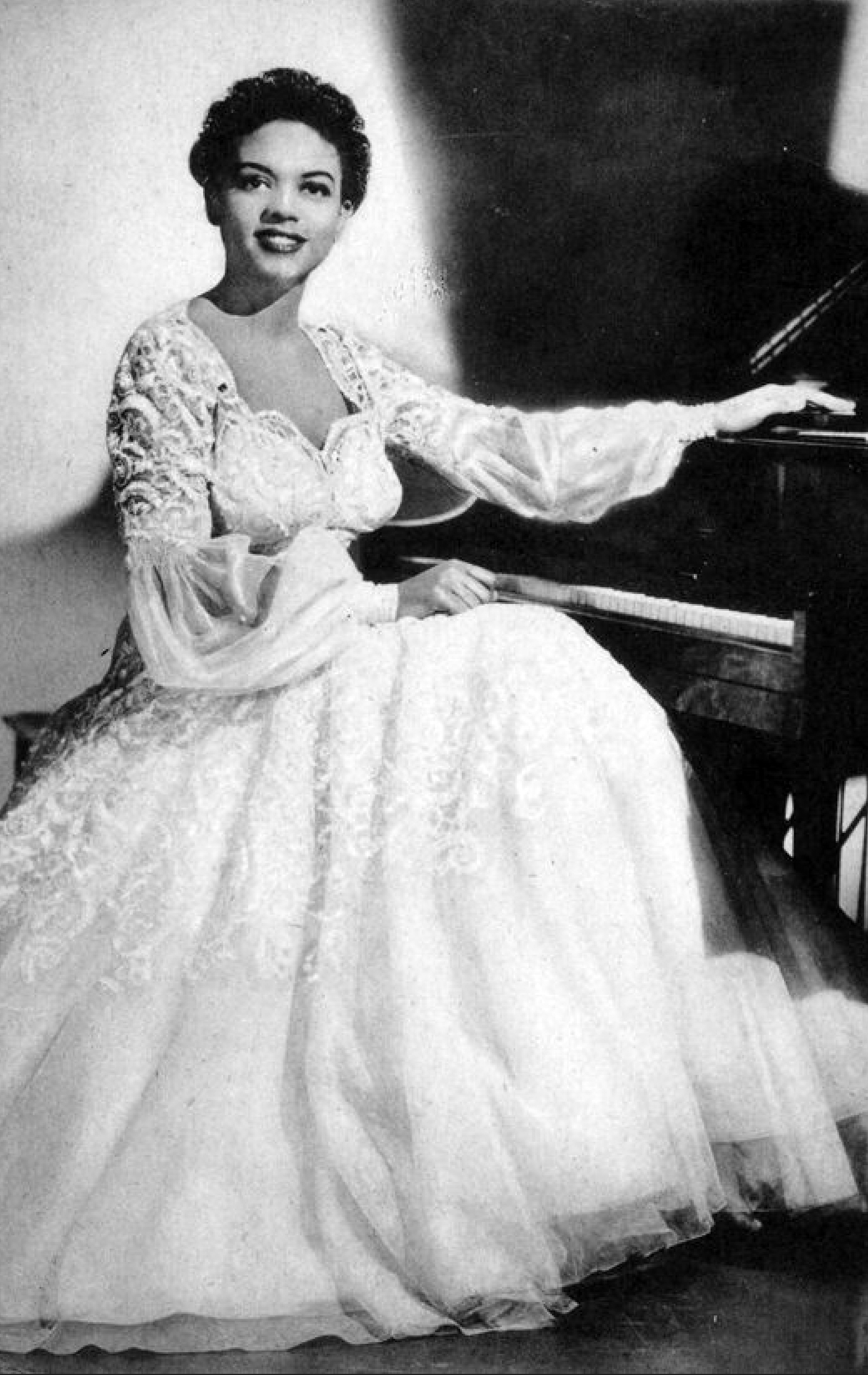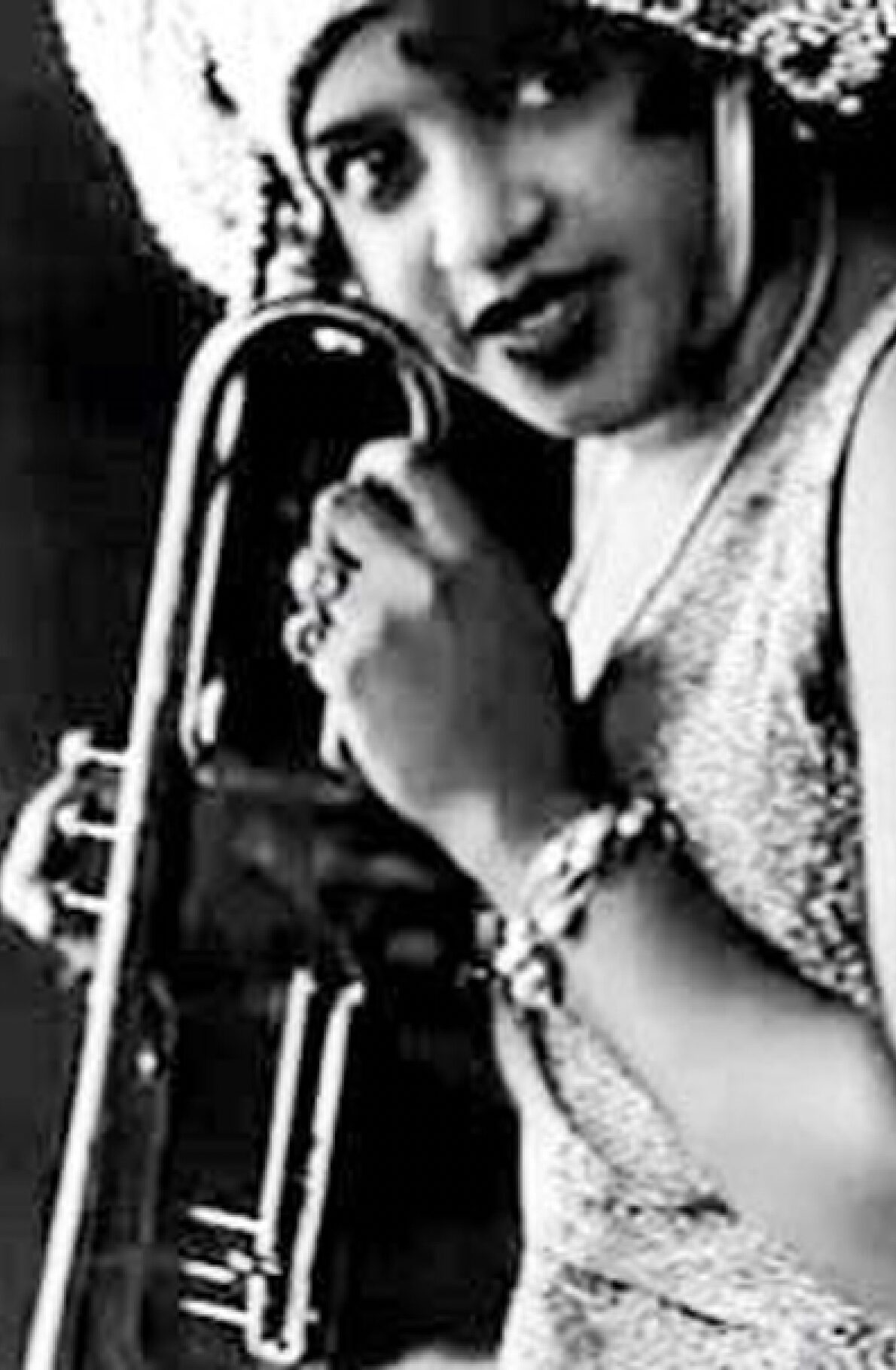SUE'S SPOTLIGHT: Women in Blues and Jazz
Women in Jazz and Blues: Hazel Scott • Valaida Snow • Bricktop
This month’s spotlight includes three musicians who were essentially driven out of the country, either by racism and/or politics. This period includes the ’20s, ’30s, ’40s, and ’50s. This pattern seems to be repeating today but by different names (DEI, Woke, Censorship, etc.)
HAZEL SCOTT: 1920-1981

Hazel Scott
Hazel Scott was probably one of the most talented musicians of the 20th century. She was born in 1920 in Trinidad. Her mother moved the family to Harlem and quickly realized that Hazel was a music prodigy. She was playing by ear at the age of three and totally delighted her neighborhood. Her mother, Alma Scott, was a classical pianist and saxophonist, who played in several all-women bands in order to earn a living. At the age of 13, Hazel was playing sax in her mother’s band, the American Creolians. By 15, she was playing opposite Count Basie at the Roseland Ballroom, in New York City. Her performances at Cafe Society in Greenwich Village, in 1939, pushed her career to a new level. She moved to LA and signed a contract with RKO, a major movie studio and immediately came into conflict with the racist strictures of Hollywood. She refused to be portrayed as a singing maid or appear in segregated films. She insisted on equal pay with her white counter parts, but standing up to the studios brought her movie career to an end by 1945 and she moved back to NYC.
Here’s Hazel Scott on two pianos!
Not only was she a fantastic piano player, she could sing and was a delightful performer. She was the first African-American to have her own tv show (not sure of the dates here, as other people claim this title also). She married Adam Clayton Powell, Jr., the first African-American to be elected to Congress since the Emancipation. Despite this, Senator Joe McCarthy and the House of Unamerican Activities Committee (HUAC) called her in to testify in 1950, accusing her of communist ties, and her TV show and basically her career in the US were blacklisted. She moved to Paris in 1957, and her home became a gathering place for African-American expatriots. She continued her career there and moved back to the USA in 1967. By then, times had changed. The music scene had moved on to MOTOWN and British pop. She still performed in smaller clubs for her fans up until two months before she died of pancreatic cancer, in 1981.

Hazel Scott was the gorgeous face of mid 20th-century jazz. She was the most glamorous, well-known black woman in America, making todays equivalent of $1,000,000/year. She headlined sold-out shows to integrated audiences, refusing to play for audiences that were segregated. Anyone that heard and saw her was immediately impressed, no matter how old she was. I knew about Hazel Scott, but never heard anymore of her after the ’50s. Now I know why
Reference: KPBS television has recently released the documentary The Disappearance of Miss Scott. Check for listings.
Here’s another clip of Hazel with Charles Mingus and Rudy Nichols, playing “Autumn Leaves” in French.
VALAIDA SNOW: 1905-1986

Valaida Snow
Valaida Snow was born in Tennessee, in 1905, into a musical family. With their encouragement, she learned to play all the instruments in the orchestra, especially trumpet. She was called “Little Louis” in England. By the age of 15, she was making short, small trips. By 18, she was traveling all over the US, and, by 22, had achieved national recognition. She began appearing on Broadway, with the likes of Ethel Waters, Josephine Baker, and Blanche Calloway, among others. She could sing, arrange for big bands, dance, and effectively lead a band. She spoke seven languages. Because of this, she could work with whatever band she happened to be playing with. She was completely independent.

Snow on trumpet.
Valaida really started living life in 1926, as though she were in the global age, as if the one world society had already been established, rather than the literal slow-boat-to-China reality. She was working with Earl Hines in 1928. As HInes described her, “She just loved a good time, and she had to have the best of everything. She used to dress luxuriously and look very glamorous!!” She worked with a number of big bands in England, Paris, Shanghai (there was an international set there who loved and supported jazz), Hong Kong, Burma, Rangoon, Turkey, Tokyo, Bombay, and Cairo. She was highly respected by Afro-Americans in the US, but largely unknown by the general white society. Very few recordings remain of hers and are mostly from small labels in Europe.
Despite her independent spirit, and talent, and the success she had overcoming Jim Crow and the misogyny of that era, she was scooped up in 1940 in Copenhagen, by the Nazis, and sent to an internment camp for non-Aryans. The Danes managed to arrange her release in 1942, and she returned to the US. She weighed 64 pounds. She recovered and continued performing, but her health had been compromised. She died of a cerebral hemorrhage in 1956.
Snow and her band playing Duke Ellington’s “Caravan.”
Although Valaida Snow did not exactly call herself an ex-patriot, she certainly self-expatriated because that’s where the work, money, and respect were. And she was talented enough to work anywhere, with anyone.
BRICKTOP: 1894-1984

Bricktop in her later years. Photo by Jack Robinson.
One of the original Afro-American artists to become an ex-patriot in Paris was a fascinating character named Bricktop. She largely grew up in Chicago. Her mother was a mixed race woman who was born two years after the Emancipation. Her father and Bricktop’s grandfather were probably her Irish-American enslaver. Consequently, Bricktop had flaming red hair and freckles. Ada Beatrice Queen Victoria Louise Virginia Smith, better known as Bricktop, was an American dancer, jazz singer, vaudevillian, and self-described saloon keeper, who owned the famous nightclub Chez Bricktop in Paris as well as clubs in Mexico City and Rome.
World War I was over, but not before African-American soldiers experienced the freedom in France that they never had in the US. Many of them never left Europe. Bricktop arrived via Harlem, where she was already headlining in Harlem’s top clubs. This was just as the Harlem Renaissance was blossoming, after World War I and before Josephine Baker arrived. Eventually she became mostly well known as a hostess. Although she could sing and dance (she did the Charleston for Cole Porter), she was better known for hosting a club that attracted the hipsters of the time, including American ex-patriots Zelda and F. Scott Fitzgerald, the Duke and Duchess of Windsor, Langston Hughes (poet), Mabel Mercer (singer), Duke Ellington, the Aga Khan, Django Reinhardt and Stephan Grapelli, and many more. Cole Porter wrote “Miss Otis Regrets” for her and debuted “I Love Paris” at her club. She had a friendly relationship with Josephine Baker for many years. Her place was small and very intimate with great music, and lots of artists of all kinds. Bricktop made sure everyone was enjoying themselves. There are still remnants of the old club in the Pigalle section of Montmarte, not far from the Moulin Rouge.
Bricktop singing “St. Louis Blues.”
When Hitler came along, she was forced to return to New York City. Eventually, she started a Chez Bricktop in Mexico City (1945-1949). She then moved to Rome, which had a hipster set, including Elizabeth Taylor and Richard Burton, Ava Gardner and Frank Sinatra, Martin Luther King Jr., and more. She closed the club in 1964 as the disco craze began and times had changed. Cole Porter considered her a queen and an empress in a former life. She was not the best singer, nor actress, nor even a beauty. She was something more rare: an entertainer in the complete sense. She moved back to NYC and died in 1984.






